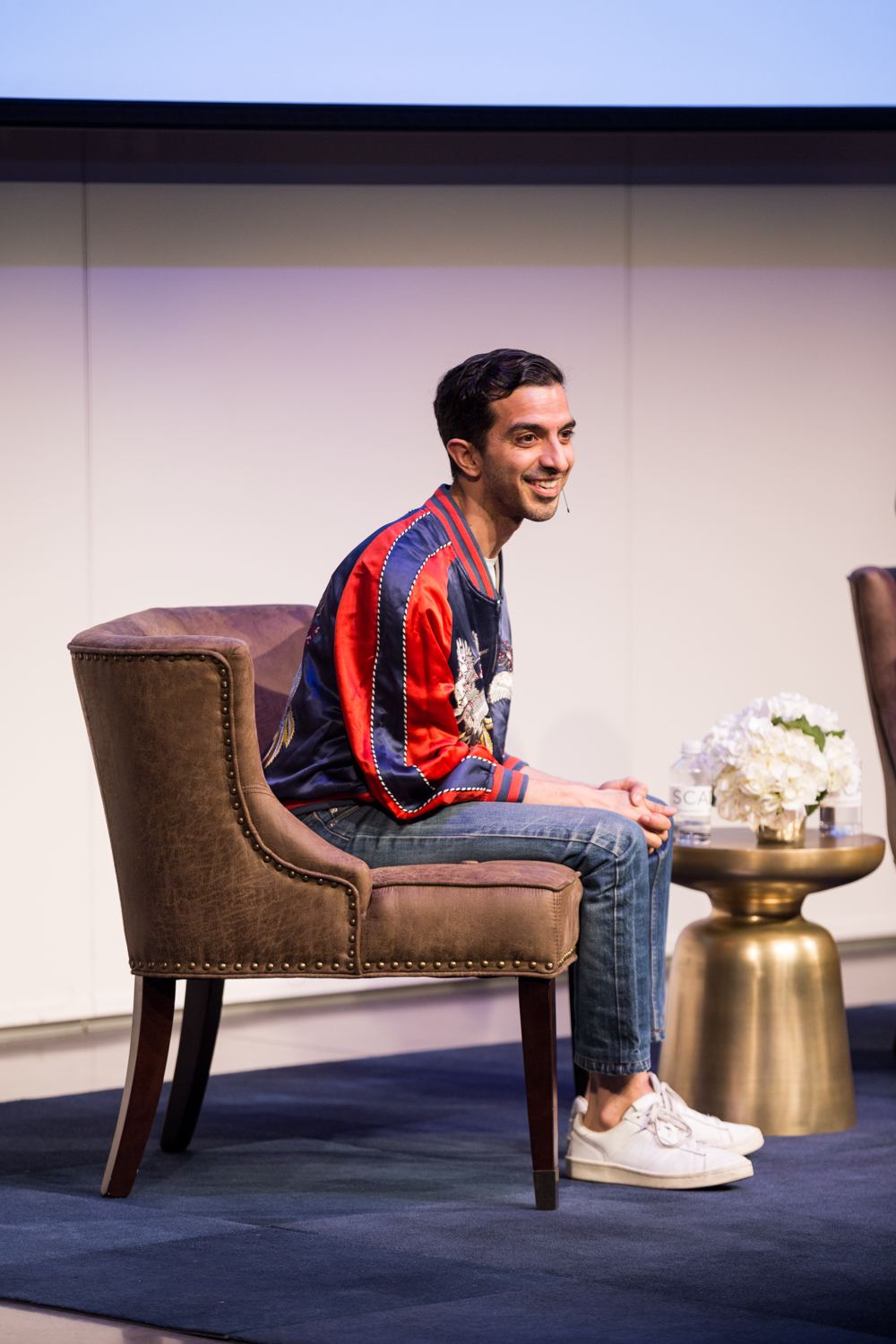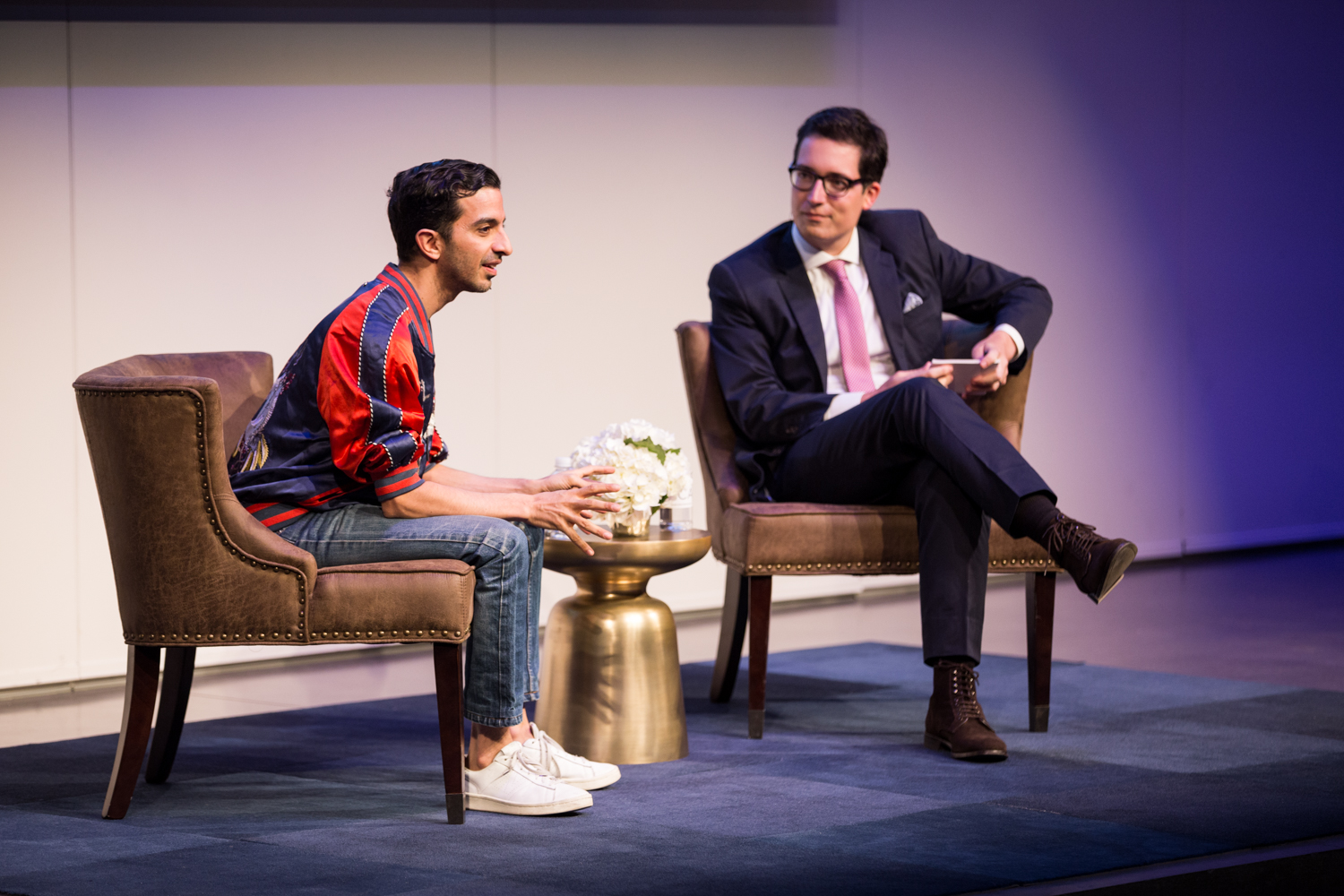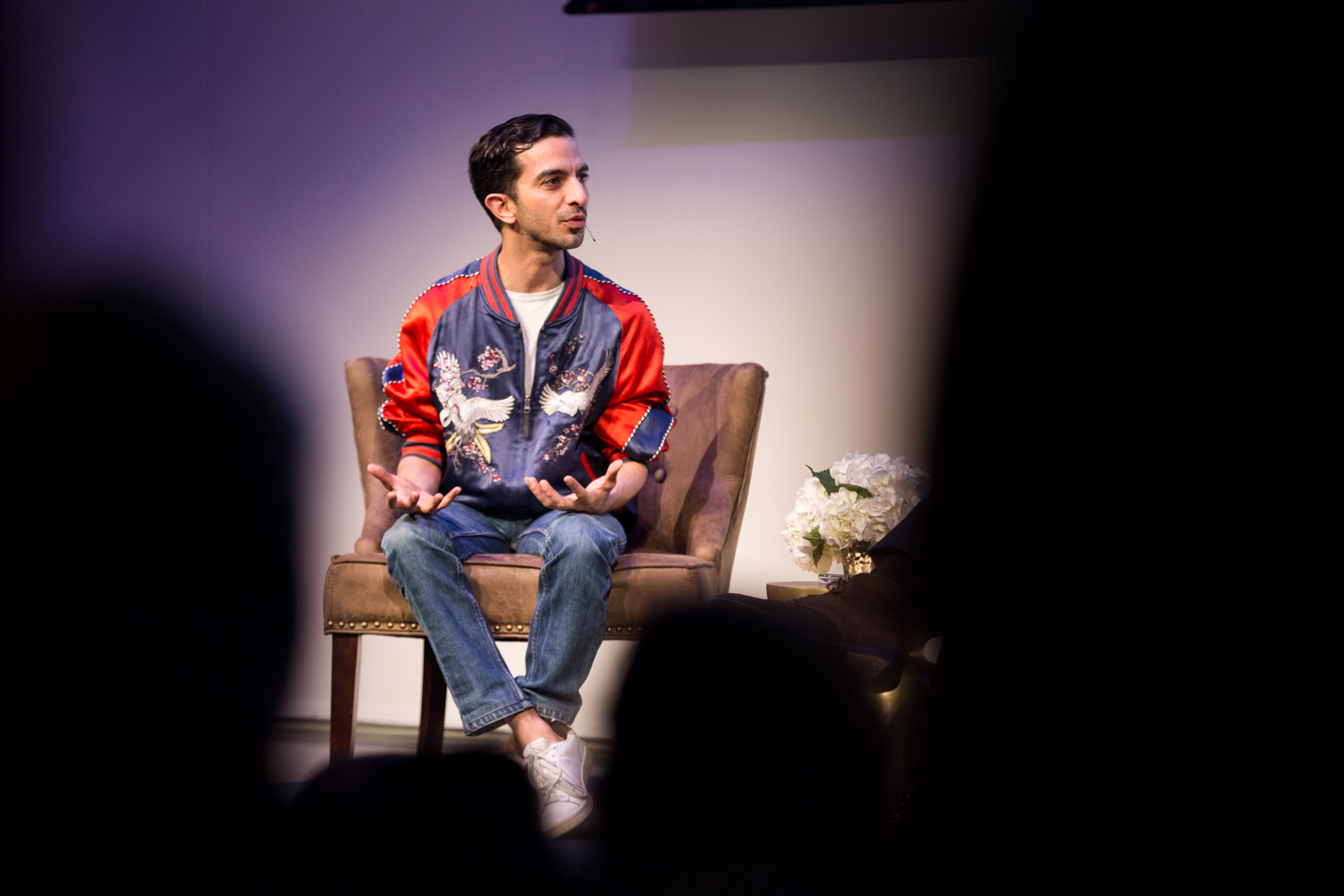It’s hard to believe that the Business of Fashion (BoF), an online publication for fashion news that curates a million views per month, started as a personal blog for family and friends.
Founder, CEO and Editor-in-Chief of BoF Imran Amed saw a niche in the market to create a platform that discussed an insider, analytical side of fashion, and he decided to fill it.
Eventually, Amed took the password off his blog and began writing with an instinctive vision. The rest is history.

Amed scrunched up the sleeves of his silk Louis Vuitton bomber jacket and stepped deep into the fashion industry. It’s not enough to stay at the surface level; fashion is and could be so much more. Amed stressed respecting creativity and the beauty of fashion, but urged students to figure out ways to use it for the better good.
“Glamour and gloss attracts people, but can become dangerous if that’s all we are interested in,” said Amed.
When asked about the power of social media, Amed made the relevant point that it’s not about the amount of likes or followers, but how people exercise it to be genuinely influential.
Of course, Edward Enninful was brought up when discussing the rise of new influencers. Although he may be the freshly positioned editor-in-chief of British Vogue, which alone is a powerful title, he’s influential for starting powerful conversations. The “I Am an Immigrant” video campaign for W Magazine went beyond the surfaces of fashion and united diversity.
The same idea is applicable to the implementation of technology into luxury fashion.
For Amed, it’s not about the latest gizmo or gadget, but how to adopt technology to understand the customer as soon as they walk into the door. Companies need to develop curated experiences and media platforms that allow people to uniquely experience a brand.
A study by Harris Group found that 72 percent of millennials prefer to spend their money on experiences rather than on material goods, so Amed is spot-on with encouraging brands to adapt.
Staying tied to the system is a thing of the past, and although the atomization of traditional fashion will not be a smooth ride, Amed recognized that.
“We are at a time of great disruption, but that also means we are at a time of great innovation,” said Amed.
The goal of integrating technology into the fashion industry should be about telling inspiring stories and touching people with creative imagery. But that doesn’t mean every company should use every channel in the game.
The channels you operate should be brand specific. BoF doesn’t have Snapchat because it’s not applicable to their company. Since 2007, when viewership was a thousand a month, BoF has been taking risks and experimenting digitally, and they plan to keep experimentation in their DNA.
Amed admits that he has no crystal ball when it comes to predicting the future of fashion.
“The most luxurious product we have is ourselves,” as he said, is his guiding principle.
There is so much noise in the fashion industry and everyone has accumulated heaps of stuff, so Amed asked: how can we have a better quality of life?

He strives to change the way people think, moving a step above Maslow’s hierarchy of self-actualization. Amed proposed an update by placing a ball on the tip of the triangle. The ball symbolizes going beyond self-actualization and making an impact in someone else’s life, or making your own dent in the world.
The idea is to better the world around you, which led to the topic of sustainability and ethics within the fashion industry. Amed stressed the importance of holding fast fashion companies accountable, reminding us that, ultimately, consumers have the power to change the industry. If consumers demand changes and act upon them, the industry will respond.
The fashion industry has done a lot of responding lately (yes, politically), and Amed was a huge advocator for creating conversations from the get-go.
Amed took his personal frustration with the election and created #TiedTogether with a team of equally disappointed colleagues over a lunch break. Since fashion is a visual industry, the BoF team wanted a visual way of supporting solidarity and human unity, healing concerns about heated political discourse. The symbol of #TiedTogether became the white bandana and has appeared in runway shows from Tommy Hilfiger to Dior. The movement has already raised more than $50,000 for the American Civil Liberties Union and UN Refugee Agency.
Imran Amed provided SCAD students with valuable and insightful information about the current state of the fashion industry and where he thinks it will be going in the future. He reminded us about the importance of looking behind the gloss, truly understanding all the inner workings of the industry, and taking risks early.
Amed ended with very encouraging words: “Take the time to get to know yourself. You’ll be ok and everything will work out. It did for me.”
Indeed it did.
Written by Emily Cole
Photos by Angie Stong

